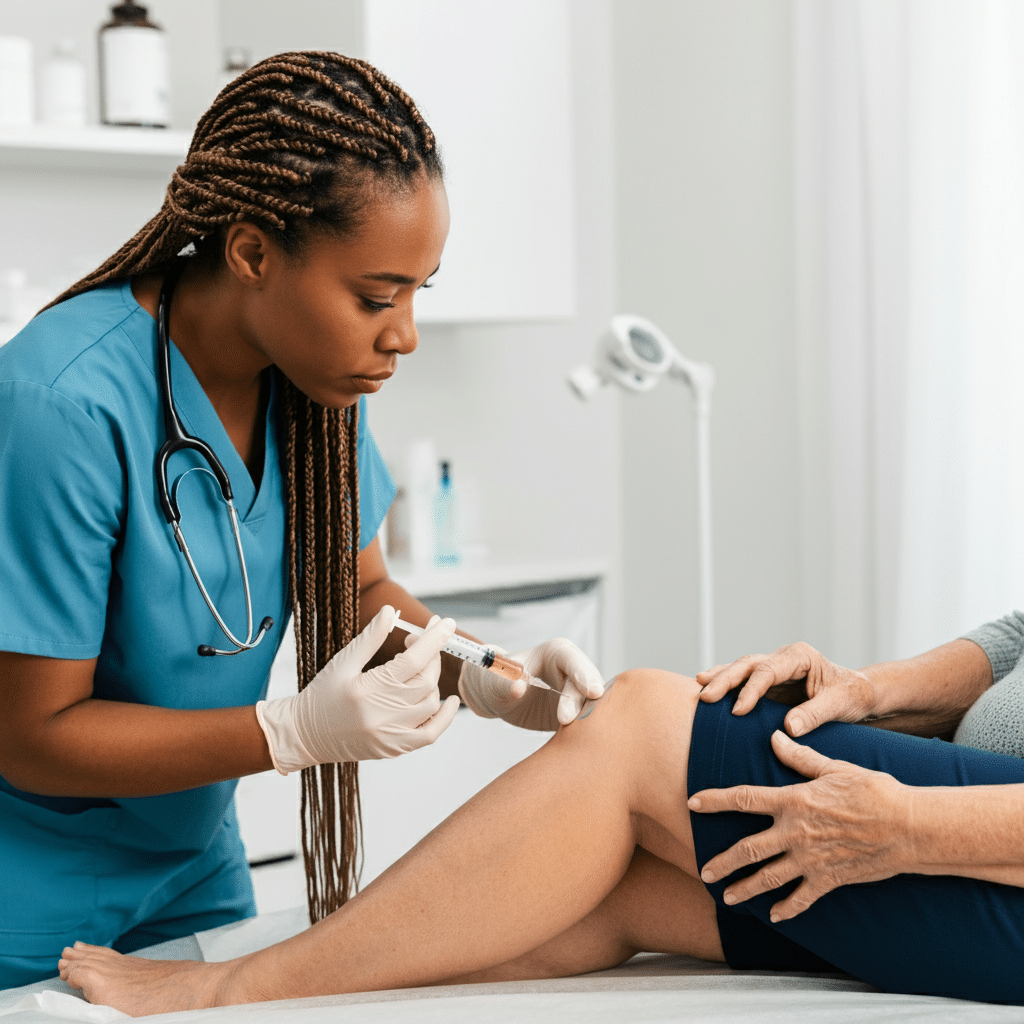
Sports injuries are an inevitable part of an athlete’s journey, often causing setbacks and delays in their training and competition schedules. Traditional methods of injury management, such as rest, physical therapy, and medication, have been the go-to solutions. However, in recent years, there has been growing interest in alternative treatments, and Platelet-Rich Plasma (PRP) injections have emerged as a promising therapy for speeding up sports injury recovery.
If you have suffered an injury while participating in any type of physical activity, you may want to seek treatment from a medical professional. Injury to muscles, tendons, ligaments, and bones can occur during exercise or while playing sports. These injuries are usually minor and can be treated at home, but you should see a doctor if the injury is severe or does not heal in a reasonable amount of time. A prolotherapy treatment from a doctor, such as PRP treatment, can be used to treat common injuries, such as sprains and strains.
What is PRP Therapy?
Platelet-rich plasma (PRP) is a form of regenerative medicine that utilizes the body’s natural healing mechanisms to promote tissue repair and regeneration. The procedure involves extracting a small amount of the patient’s blood, processing it to concentrate the platelets, and then injecting the PRP into the injured area. Platelets contain growth factors and proteins that play a crucial role in the healing process, making PRP an attractive option for athletes looking to expedite their recovery.
How PRP Works in Sports Injury Recovery?
1. Enhanced Healing Response
- PRP injections amplify the body’s natural healing response by delivering a concentrated dose of growth factors directly to the injured site.
- Growth factors stimulate the production of new cells, including collagen, which is crucial for repairing damaged tissues such as ligaments, tendons, and muscles.
2. Reduced Inflammation
- Inflammation is a common response to sports injuries and can prolong the recovery process. PRP has anti-inflammatory properties that help reduce swelling and pain.
- By modulating the inflammatory response, PRP creates an environment that is conducive to faster healing.
3. Tissue Regeneration
- PRP promotes the regeneration of damaged tissues by providing the necessary growth factors for cell proliferation and differentiation.
- This is particularly beneficial for injuries that involve tissues with limited blood supply, as PRP enhances the blood flow to the injured area, facilitating healing.
4. Targeted Treatment
- PRP injections can be precisely targeted to the specific area of injury, allowing for a more localized and effective treatment.
- This targeted approach minimizes the risk of systemic side effects and ensures that the therapeutic components reach the site where they are needed most.
How do PRP Injections Work?
First, your provider draws some of your blood. Then, it’s put in a centrifuge, where the platelets are separated from the rest of your blood’s components. The resulting serum will contain 5-10 times more platelets than would exist in the same volume of untreated blood.
The PRP solution is then injected into the injured area to spur healing and tissue regeneration. Platelet-rich plasma therapy may be able to help delay injury progression, reduce pain, accelerate the healing process, and potentially reduce the need for surgery
When administering PRP injections, fluoroscopy or ultrasound may be used to ensure that the injection is administered precisely at the site of damage or pain.|
How Long Does a PRP Injection Last?
Platelet-rich plasma (PRP) injections typically last between six months to a year, though individual results vary. The longevity of PRP treatments hinges on diverse factors like the injection site, the individual’s healing process, and the condition being treated. In orthopedics, PRP might retain efficacy for up to a year, aiding in tissue repair. For aesthetic purposes, facial rejuvenation with PRP might show effects lasting around nine months. Maintenance sessions can extend the benefits. Nevertheless, consult the best orthopedic doctor in Miami for personalized insights and a clearer understanding of how long PRP injections last could offer relief or enhancement based on your unique circumstances.
Platelet-Rich Plasma (PRP) Therapy in Miami, FL
Platelet-rich plasma injections present a promising avenue in the realm of sports injury recovery. The potential to accelerate the healing process, reduce inflammation, and enhance tissue repair makes PRP an attractive option for athletes seeking efficient recovery methods. However, it is essential to approach PRP treatment with a balanced perspective, considering individual factors, the nature of the injury, and the current state of scientific evidence.
At OrthoMiami board-certified orthopedic surgeon Dr. Cesar E. Ceballos employs a variety of innovative treatment modalities, including PRP therapy, to effectively address the full range of musculoskeletal conditions and injuries.
To learn more about this revolutionary PRP treatment and whether you are a suitable candidate for it, call us today at (305) 596-2828 to arrange a consultation with Dr. Cesar Ceballos or use our online appointment request form.